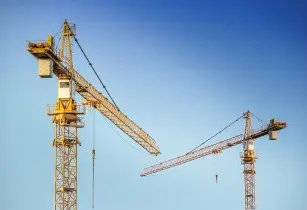The increasing demand from construction, logistics and building activities will continue to create an overall positive growth scenario for the loader crane market, according to a report from Persistence Market Research
According to the study, steady growth is projected for the loader crane market over the next eight years.
While construction and industrial activities continue to flourish, manufacturers are increasingly becoming aware of benefits associated with loader crane in terms of efficient loading, unloading and goods transferring operations, without the intervention of additional equipment. Moreover, the versatility and flexibility of loader crane make it a preferred choice for many end-user industries such as construction, forestry, agriculture, oil and gas, manufacturing industry, transport and logistics, and waste management.
During 2018-2026, the global revenue of the loader crane market is anticipated to expand at a steady CAGR of 4.6 per cent and reach a valuation of US$2,083.6mn by the end of 2026. With more than 40 per cent value share, the building and construction segment is expected to remain the largest revenue generator in the loader cranes market throughout the forecast period. Booming industrial and infrastructural development, owing to increasing investments made by governments as well as private sector companies in emerging economies will create growth opportunities for the loader crane market. Rapid growth in the residential sector in urban as well as semi-urban areas in this region will contribute significantly to the market growth.
Since, lifting limitations associated with conventional cranes including lifting capacity, poor driving comfort and difficulty in steering manoeuvrability looms large, high capacity lifting offered by loader crane will drive the adoption in the coming years. Additionally, since government support through loans, increased foreign direct investment (FDI), and investments and subsidies is increasing, urban infrastructural projects are gathering pace, especially in Asian countries, further driving the demand for loader cranes.
The rental market for loader cranes is steadily growing as several end-user companies are opting for rental equipment to reap its benefits, without having to deviate from their core business and burden their balance sheets.
The rental loader cranes market is well established in North America and Western Europe. Conversely, this factor is also anticipated to inhibit the growth of loader cranes market in the coming years. Owing to high cost and maintenance associated with new loader cranes, small and mid-sized companies are opting for equipment on a rental basis. Further, strong demand for used loader cranes against low-cost China-based loader cranes has been observed in Vietnam, India and the Middle East and Africa, primarily due to lack of monetary resources to invest in new loader cranes. Although loader cranes renting would only impact the market growth in the first half of the forecast period, it is likely to be compensated by product advancements, attributable to stringent environmental regulations and increasing awareness levels.
The global loader cranes market is a consolidated one, with top three players including Palfinger, Hiab and Fassi holding close to 70 per cent of total market share. Emphasis on product innovation along with a focus on sales through indirect distribution channels are two major differentiating factors that would enable organised players to strengthen their positions in the global and regional loader cranes markets.





